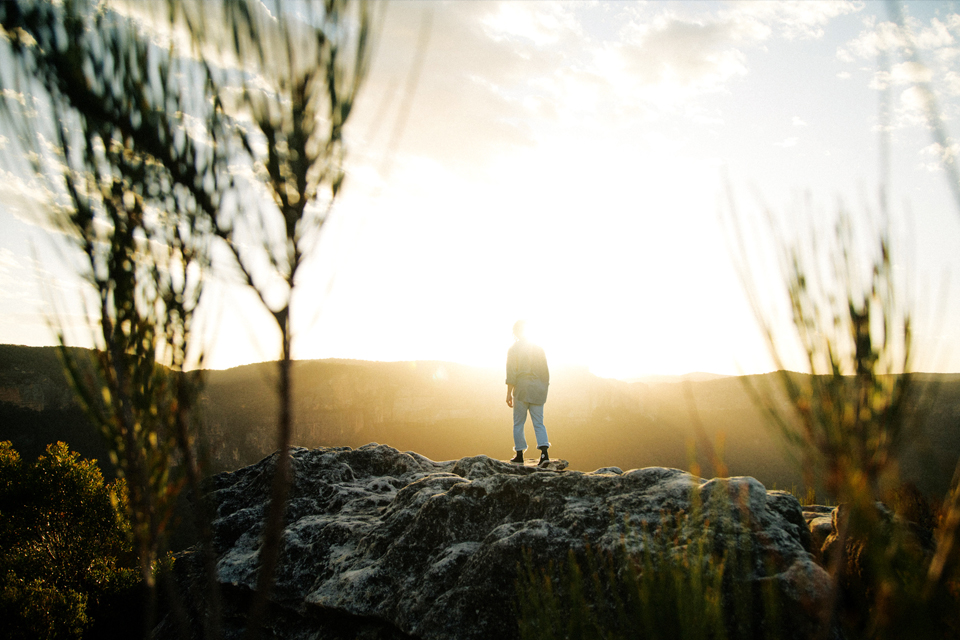Consider, for a moment, the thought of sitting and listening to the sound of silence — perhaps in a mountainside cave or in an empty house. Unless you’re one of the relatively few people in the Western world whose days aren’t punctuated by sounds of traffic, sirens, radios, TVs and phone alerts, this thought is probably either fear-inducing or enticing.
Of course, noise has always been a component of human life, but never in the history of humanity has silence been so hard to come by. With the advent of certain technologies, busier lives and the fact that there are literally more people walking on the planet than ever before, moments of silence are becoming more and more elusive.
Perhaps it’s precisely because of the uncommonness of silence that we resist it. As a species we’ve become adept at obliterating opportunities for quiet time: for lone car rides there is a podcast; for nature walks, Spotify; for the spare moments that we might spend communicating with our loves ones, Netflix. In psychology, the word for this fear of silence is sedatephobia, and it’s on the rise.
What is it that we’re afraid of? Perhaps what frightens us most is a sense that silence represents nothingness, rather than its own entity. In the art world, the term for the fear of negative space is horror vacui. We can observe, in an arabesque painting, for instance, that every empty corner of the canvas is filled — in the same way that we fill silences in a conversation. Some of us are afraid to be quiet because the sound of silence brings the confronting sound of our own hearts and mind.
The irony of silence is that it’s actually full of information — a quieter kind of information. It’s full of everything we can’t hear when we’re making or seeking noise, such as our intuition and deepest wisdom. And, as Thich Nhat Hahn points out in his 2015 book Silence: The Power of Quiet in a World Full of Noise, the absence of sound allows us to respond from a more authentic place. “What you need, what we all need, is silence,” he writes. “Stop the noise in your mind in order for the wondrous sounds of life to be heard. Then you can begin to live your life authentically and deeply.” It is space that gives meaning to form.
Scientists, too, have explored the benefits of the sound of silence. Those who live in particularly noisy locations — for example by a freeway or on the corner of a busy intersection — have been shown to experience consistently higher levels of stress hormones.
In a 2006 study, doctor Luciano Bernardi accidentally discovered, while trying to research the effects of different musical styles on the brain, that participants were more calmed by the pauses between musical tracks than by the music itself. During the silent intervals he observed a drop in heart rate, respiration and blood pressure.
In addition to this, biologist Imke Kirste found in 2013 that two hours of enjoying the sound of silence a day helps stimulate cell development in the hippocampus, which is responsible for memory and spatial processing.
Intermittent silence has been observed in India for centuries. Known as mauna in Hinduism, the practice of remaining silent for one day per week is thought to preserve energy — specifically the energy that is lost when we talk. Mahatma Gandhi was a dedicated practitioner of mauna. Author and philosopher Prema Pandurang, who has been observing silence every Tuesday for years, told Hunduism Today in 1997 that, “There is so much stress and tension today that everyone must observe silence — some time away from mother, father, child and wife, friends and everyone — at least a half-hour every day with no telephone calls in some corner of the house where one can see nature. Just sit and silently think about what you are doing.”
Instinctively, we know that we need silence. This is why more of us are beginning to seek it out. Finland’s tourism board was all too aware of this in 2011, when their marketing team capitalised on the country’s abundance of wide open, quiet spaces. The resulting tourism campaign promoted scenes of people alone in the wilderness with the caption, “Silence, Please.” In today’s day and age, silence is a commodity.
Of course, any methods for finding silence really offer a path to the silence — and sounds — within. To avoid silence is to be in the habit of reaching outwards instead of inwards, and methods that help us cultivate silence ultimately help us reach.
Paths to experiencing the sound of silence
- Digital detoxes or Sabbaths. For many of us, the constant ping of personal devices has become so omnipresent that we can differentiate between the notification sounds of text messages, smart phone applications and emails without even thinking about it. The result is that we’re constantly being interrupted and forced to switch tasks — a habit that has been shown to significantly reduce our cognitive efficiency. Setting aside windows of time or even days without any technological intrusion can work wonders for your sense of calm, creativity and ability to gain proper insight. While certain religions have always observed a weekly day of rest and worship, some non-religious people now adhere to a digital Sabbath by going technology-free on Saturdays or Sundays.
- Silent retreats. The most well known silent retreat is the Vipassana tyle made famous by Burmese businessman-turned-Buddhist-leader SN Goenka decades ago. Vipassana retreats last for 10 days and involve 10 hours of mindfulness meditation per day, as well as “noble silence” which is observed at all times — including while eating, drinking, showering and sharing a room with other residents. While there are SN Goenka-style retreats all over Australia, there are also other silent retreats separate to the Vipassana tradition that often have a shorter duration and may be less restrictive.
- Floatation tanks. Commercial floatation tanks have been around since the 1970s but are currently in resurgence thanks to a renewed interest in finding peace and quiet. These contraptions are designed to offer the ultimate experience of sensory deprivation by removing all stimuli (a method sometimes referred to as Restricted Environmental Stimulation Therapy, or REST). The tank is filled with water that’s super high in Epsom salt (allowing you to float), and set at the same temperature as the human body (meaning there is very little physical sensation). It’s also completely void of any light or sound. For those who don’t like the thought of climbing inside a small space, some clinics offer floatation rooms instead of pods or tanks.
- Forest bathing. Practised in Japan — where it’s known as shinrin yoku — since the 1980s, forest bathing involves literally immersing oneself in a tree-enshrouded area. Shinrin yoku is partly revered because of the scientifically proven health benefits offered by trees (they release certain essential oils that help decrease adrenaline and increase natural killer cells, for example), but also because it provides an opportunity to be still and observe the gentle sounds of nature, away from human noise.
- Off-grid accommodation. Sometimes the easiest way to remove noisy distractions is by taking them off the table. While the absence of Wi-Fi was once seen as a drawback for accommodation, it’s now being touted as a drawcard. A simple search through Airbnb and Riparide properties will bring up a variety of “off-the-grid” options where there might be no internet connection, minimal phone reception and plenty of nature to admire: think a cabin the woods, a glamping experience or a yurt perched on the edge of a valley.
Words JANE HONE
Want to learn more about being grounded? Visit our grounded archive page.




